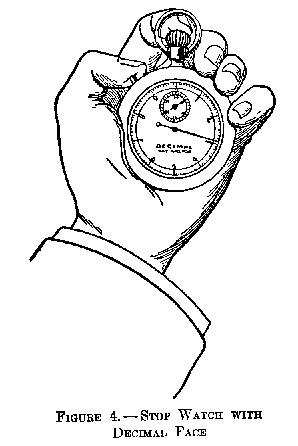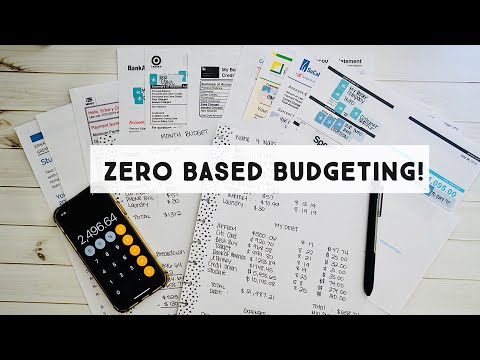Contents
The need for oscillators is most felt during times of sideways movement or directionless movement in the market. Here, the oscillators give clear signals of buying and selling by oscillating between the extremes. In dull markets, when many traders would sit out, the oscillators give their followers a chance to make money. Update your mobile numbers/email IDs with your stock brokers. Receive information of your transactions directly from Exchange on your mobile/email at the end of the day. The concept of momentum oscillator is used to indicate the price velocity or the speed with which the changes in the prices of a stock are seen.

The ideal entry conditions based on RSI are when the moving average of the RSI is rising for the defined candles in a row and the RSI is below 70. The moving average will define a trend and the RSI below 70 will ensure that the decision to enter the market is not at the top of the trend. When a trader or investor enters a downtrend when the RSI falls below 50, the trader or investor must decide how long to remain in the trade.
What Are Moving Average Crossovers?
The one with the highest RSI would mean that it is trading at the highest level from where it was 14 days back. He then digs deep into the sector and looks at the companies in the sector and sorts them on the basis of RSI. Here again, he is keen only on the top ones or the strongest ones. The chart shows that every time the price touches the 30 levels; it bounces back, sometimes for a short duration but on others, it is an important turning point. The message here is that the market respects this oversold line, with a number of participants placing their bets to go long on it.

To screen one, there are various factors that you can take into consideration such as market cap, volumes, etc. However, checking the momentum indicator would definitely help you screen stocks. One of the most popular momentum indicators is the Relative Strength Index . When a stock is in continuous downtrend, RSI will remain stuck in the oversold region as it cannot go below 0. Hence traders should not buy inspite of strong oversold RSI signal as the stock might keep climbing down following its downtrend. Decreasing the setting makes the indicator more sensitive and shows more instances of overbought and oversold conditions but provides more false signals.
[Updated] Differences Between Long term, Intraday and Swing Trading-2023
Sometimes the overbought condition will be extended above the level like 75/25 or even 80/20 levels to mark overbought and oversold situations. Typically, indicators are of two types, leading and lagging. In other words, the latest RSI number incorporates the movement of the past what is fiscal deficit 14 days and throws up a number based on the strength or weakness of the market. Thus, if all the recent 14 days have had a positive closing, we would be closer to an overbought situation while if all 14 days are negative, the RSI would be a number closer to the oversold line.

In fact this is how you develop your edge as a trader. You need to analyze what works for you and adopt the same. The illustration above shows that with the setting at half the standard rate, the indicator line switches between overbought and oversold more often.
What is a Momentum Indicator?
An RSI value can show false positive when a stock price shows an overbought signal followed by a sharp decline. Similarly, a false negative is triggered when a bearish crossover is followed by sudden acceleration in stock price. Relative Strength Index is a momentum https://1investing.in/ indicator to measure the magnitude of price change. It is one measuring unit that helps traders understand when a stock is overbought or oversold. A bullish divergence is observed when the price of an asset makes a lower low and RSI makes a higher low.
A problem that traders face is that while buying or selling a stock or index, they are not sure if they are buying at the bottom price and selling at the top. There are no defined boundaries, and prices can continue to rise or fall. With no boundaries, it becomes a risky business to venture out in the open without any defined exit rules. Fear of the unknown is rampant in the market and a big reason for failure.
Prevent Unauthorized Transactions in your demat / trading account Update your Mobile Number/ email Id with your stock broker / Depository Participant. You must have come across price charts displayed on trading terminals. These price charts usually have lines plotted in smaller panels above and below them.
In terms of the approach’s findings, we have discovered that this technique offers the best long-term return. As shown in Table 1, the larger the duration of the trend, the higher the return. Historical price charts may be used to find potential trades.
- This is a MTF HUD built around Chartguy Dan’s trading style of 12/26 EMAs and RSI levels from multiple time frames.
- When it comes to trading, one must establish a set of trading criteria in advance.
- Fear of the unknown is rampant in the market and a big reason for failure.
- By analyzing RSI readings, investors can better time their buys and sells.
When the stock is in bullish momentum, the RSI generally stays above 30 and rarely falls below 30. Likewise, for a stock experiencing bearish momentum, the RSI will rarely hit the 70 mark. It indicates the exhaustion of the upward momentum in the stock as the accumulation of buyers has reached a saturation point. One such commonly used leading indicator is RSI or Relative Strength Index. Besides predicting the price momentum, RSI also measures the speed of price change.
The RSI may linger in overbought or oversold territory for lengthy periods of time during strong movements. For that, we need to understand another term called Divergence. A divergence is when the price of an asset moves in the opposite direction of a technical indicator. We already know that the price can either move up or down.
Interpretation of RSI
RSI shows zero value when the Average Gain value equals zero. For example, on 14 days period, RSI zero is an indication that price movement has been lower for the period, and there is no gain to measure. Like RSI, the concept of momentum oscillator was first introduced by J. Welles Wilder in his celebrated book, New Concepts in Trading Systems. To understand RSI, one must also understand what and how momentum oscillator works since the two indexes are used together to predict when market sentiment is shifting.
RSI: Stocks in overbought and oversold zones
Similarly, when a stock reaches a level of 70, traders either look to exit from their position or look for an opportunity to sell the stock short. Here the traders are looking for resistance or a pattern to confirm selling. A trader can use the oscillators to enter or buy a stock when it is oversold and sell it when it reaches the overbought level.
There was thus a clear case of divergence where the price moved higher but the RSI moved lower. Such cases point to an impending fall in prices going forward, which is visible in the second and third cases; though, in neither of them, RSI had touched the overbought level of 70. Though we use ‘Relative’ in RSI, it does mean that the value is derived relative to some other stock or index. In fact, RSI shows the strength of the stock is relative to a particular date or time period in the past.
A positive divergence is when the price line reflects a lower high and lower low as against the higher high and higher lows of the RSI. Easy to understand but sometimes I feel that videos are very much long. A ratio of 1 depicts that the stock is performing similar to the performance of the compared security, index, or benchmark. If the ratio is greater than 1, it would mean that the stock is outperforming the compared security, index, or benchmark and can allow you to earn better returns. As you already know how the Relative Strength Index is calculated. Here is the formula for calculating the relative strength.
